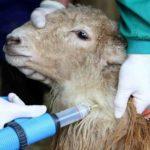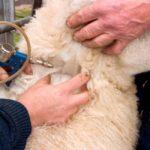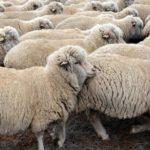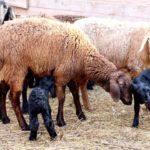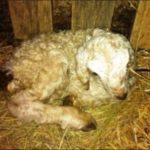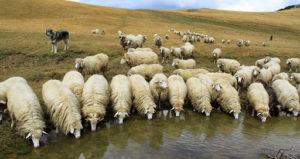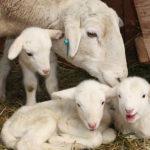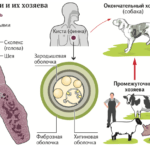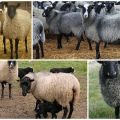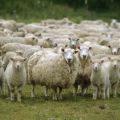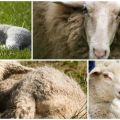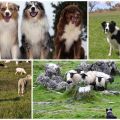Infectious and non-infectious diseases of sheep and their symptoms, treatment and prevention
Diseases of sheep reduce the profitability of the farm, can lead to loss of productivity, death of a significant number of animals. Diseases are divided into infectious and non-infectious, overcrowding of livestock makes infections dangerous for the herd. Sheep breeders need to know what measures to take in each case. Consider what diseases are common in rams - symptoms, treatment and prevention.
Infectious diseases and their symptoms
Diseases are caused by pathogenic microorganisms, pathogenic flora. When kept together, the disease quickly spreads among sheep, young animals suffer more often than others. In addition to treatment, strict quarantine measures are required, strict isolation of the sick in order to prevent infection of all animals.
Lung adenomatosis
A dangerous viral infection with damage to the bronchioles and the formation of a cancer-type tumor in the lungs. Symptoms develop slowly (4-9 months):
- discharge of mucus from the nose;
- coughing up phlegm;
- dyspnea.
Introduced to the farm by infected animals. If the flock is blown off by excreta from the sick, half of the flock may be affected. Sheep over 2.5 years old and lambs at 6-8 months are more likely to get sick. There is no cure, the animals die. No specific prophylaxis has been developed.

Smallpox
A viral disease affects sheep of any age and young animals, it is especially dangerous for fine-wool breeds. Signs:
- swelling of the eyelids, lips, eyes with mucus flow;
- skin manifestations - smallpox rash on the head, legs, genitals;
- the animal has a strong temperature (40-41 °) at the onset of the disease, then the indicator falls slightly.
Treatment is symptomatic, there are no specific drugs. Antibiotics of the cephalosporin group are used. Feeding with liquid swill.
Bradzot
A dangerous infection caused by a spore-forming bacillus. In most cases, it occurs with lightning speed in sheep, within a few hours the animal dies. Reproduction of the bacillus leads to intoxication of the body with symptoms of poisoning - foam with blood from the mouth, bloody diarrhea, severe flatulence, swelling of the neck and head. Sheep rush and jump randomly. There is no effective treatment, animals die. Vaccination helps prevent bradzot.
Listeriosis
Natural focal infection affecting sheep, dangerous to humans. Infection occurs by airborne droplets, from insect bites. Symptoms:
- septic type - diarrhea, fever, loss of appetite, lethargy;
- nervous form with damage to the central nervous system - fever, convulsions, paresis, paralysis, impaired motor functions.
If you suspect listeriosis, early treatment helps - with the use of tetracyclines ("Biomycin", "Terramycin"). Vaccinations are carried out in dysfunctional farms.
Infectious mastitis
The causative agent is staphylococcus aureus. The disease is characterized by gangrenous lesions of the udder, a gradual deterioration of the general condition. Sheep get sick immediately after giving birth, non-lactating ones do not get infected. The infection penetrates through the milk canal of the udder, it swells, becomes painful, hot. If a lamb gets sick from milk, it develops staphylococcal pneumonia. Treatment - antibiotics, sulfonamides. Udder gangrene and abscesses are treated surgically.

Infectious agalactia
Contagious disease caused by mycoplasma. The causative agent enters the bloodstream from the external environment, is carried by the bloodstream throughout the body and affects all organs, causing fever. Symptoms:
- lethargy, depression;
- inflammation of the mucous membranes of the eyes;
- swelling and inflammation of the udder;
- temperature rise;
- in lambs - lesions of joints, lungs.
Depending on the shape, individual organs can be predominantly affected - the eyes, udder, brain and spinal cord. Treatment - symptomatic, antibiotics, anti-inflammatory, tonic, ointments for mucous membranes and udder.
Non-communicable diseases
Non-communicable diseases of sheep are not dangerous for the whole flock. Their reason is inadequate care, inadequate diet, poor quality feed. You need to check what herbs are growing in the pasture so that the animals do not get poisoned. Spoiled old feed often causes digestive problems in sheep.
Bezoar disease
The cause of the disease is a perverted appetite caused by a deficiency of nutrients in feed. The disease often affects young animals, early weaned from breast milk. Sheep eat wool, which rolls into dense lumps in the stomach and interferes with digestion.
Symptoms:
- desire to eat wool;
- lethargy and depression;
- stool disorders;
- dyspnea;
- pallor of the mucous membranes due to lack of oxygen in the tissues.
Treatment - stomach cleansing, enhanced nutrition. Sometimes the bezoars are removed surgically.
White muscle disease
Young sheep often suffer from white muscle disease caused by a deficiency of certain trace elements (especially selenium). The disease is characterized by damage to the muscles of the skeleton, internal organs, metabolic disorders. If the lamb was born weak, the disease began during intrauterine development. With a constant lack of cobalt, minerals, vitamins A, E, D in the feed, most of the lambs gradually fall ill (up to 70%).
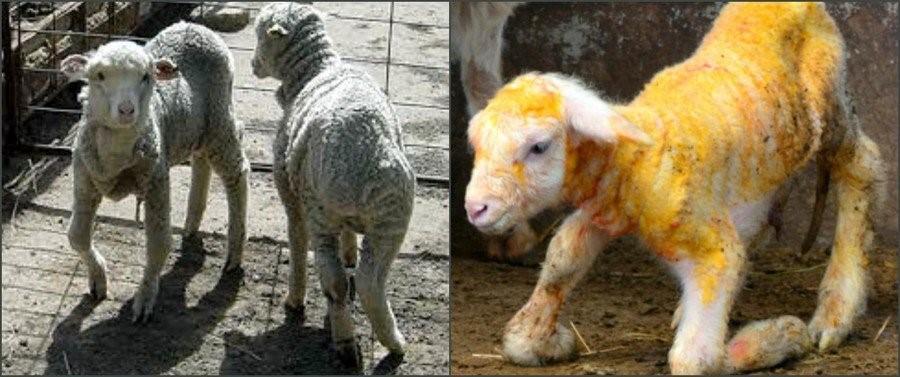
As a result of the disease, the baby does not walk well, staggers on twisted legs, respiratory dysfunctions, convulsions, and nervous disorders develop. Even youngsters of the strong Romanov breed suffer.
Poisoning
Poor quality feed and poisonous plants can cause poisoning in sheep, which are manifested by the following symptoms:
- diarrhea;
- vomiting;
- flatulence;
- oppression;
- disruption of the central nervous system.
Patients do gastric lavage, give an abundant drink with sorbents. The animals are isolated, put on sparing food.
Scar flatulence
The reason for the increased formation of gases in the gastrointestinal tract is an unbalanced diet, poor-quality feed. Food is not digested, but ferments in the stomach, causing copious gas. As a result, the abdomen swells, the animal loses its appetite, and constipation develops. A probe is used to remove gases; in difficult cases, a scar is punctured. It is important to normalize the diet, transfer to good food.
Hoof rot (paronychia)
The main symptom of the disease is lameness caused by damage to the tissues of the hoof. Paronychia is caused by anaerobic rods.The disease is transmitted from litter, sick animals. Fine-wool breeds suffer more often. Symptoms are inflammation of the skin in the hoof area, lameness, and purulent exudate. Sheep try to move less, lie down.
Patients are isolated, wounds are treated, hooves are trimmed, baths are made.
Parasites
Infection with parasites does not only lead to emaciation of sheep and loss of productivity. Many parasites carry infections and spread dangerous diseases. Invasive diseases are no less infectious than infectious ones, easily transmitted by sheep to each other.
Fascioliasis
The causative agent is fasciola, parasitizing in the liver, gallbladder. They enter the body from contaminated feed, litter. Adult sheep are more affected by the disease.

Symptoms:
- pallor of the conjunctiva;
- feverish condition;
- loss of appetite;
- bloody diarrhea;
- tachycardia, arrhythmia;
- oppression.
Sheep are treated with anthelmintics - "Politrem", "Albendazole".
Echinococcosis
A common parasitic disease involving the larval stage of the cestode. The liver, lungs, and sometimes bone tissues suffer. Echinococcal bubbles develop, disrupting the work of internal organs. Symptoms depend on the location of the parasites. Sheep are losing weight, losing productivity. There is no specific treatment yet.
Pyroplasmosis
The pathogen is transmitted by mites that bite sheep. Parasites (pyroplasmas) invade blood cells, multiply in them and disrupt activity. In sheep, the temperature rises, anemia, shortness of breath, and yellowness of the mucous membranes develop. Treatment is symptomatic; diminazene aceturate preparations are administered. It is important to start treatment early so that the animals do not die.
Important: when a sheep is infected with parasites, the entire livestock is dewormed, the premises and equipment are sanitized, and transferred to a clean pasture.
Coenurosis
A dangerous parasitic disease, the causative agent is cestodes, usually transmitted from otarny dogs. Localization - brain cells, then parasites destroy brain tissue. Symptoms in sheep are excitability, unnatural mobility, throwing. Animals up to 2 years old are most often affected. Treatment - only surgical (removal of the bladder with parasites during craniotomy). Most of the sheep die.
Helminthiasis
A large group of helminthic infestations is called helminthiases. Sheep can become infected in different ways - contact, when eating food, insect bites, from inseminated litter.
Worms infect different organs, migrate through the body, disrupting the work of individual systems and metabolic processes in general. From the products of their vital activity, sheep develop allergic reactions and intoxication of the body. For treatment, anthelmintic drugs are used for animals.
Sheep breeding makes a profit if the owners monitor the health of the livestock, vaccinate against dangerous diseases. It is important to provide animals with high-quality feed that will maintain immunity. At the first sign of illness, the sheep should be shown to the veterinarian.
